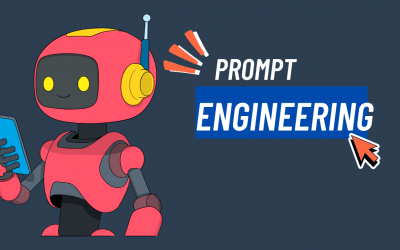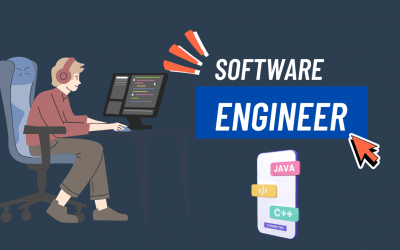Clean code principles are a set of best practices and guidelines that software developers adhere to in order to write high-quality and maintainable code. Clean code is not just about the aesthetics of code formatting; it is about writing code that is easy to understand, modify, and extend. By following clean code principles, developers can create robust, efficient, and scalable software systems.
In this article, we will explore the key principles of clean code and discuss how they contribute to the overall quality of software development. We will delve into the significance of clean code, provide practical examples, and offer actionable tips to help developers apply these principles in their daily programming endeavors.
1. Meaningful Names and Variables
One of the fundamental principles of clean code is to use meaningful names for variables, functions, and classes. A codebase with clear and descriptive names is easier to comprehend and maintain. We’ll discuss the importance of naming conventions, avoiding ambiguous or misleading names, and the impact of good naming on code readability.
2. Single Responsibility Principle
The Single Responsibility Principle (SRP) emphasizes that each module, class, or function should have only one responsibility or reason to change. We’ll explore the benefits of adhering to SRP, such as increased maintainability, testability, and reusability. Additionally, we’ll discuss practical examples and techniques for effectively applying SRP in software development.
3. Don’t Repeat Yourself (DRY) Principle
The DRY principle encourages developers to avoid duplicating code by promoting code reuse and modularization. We’ll explain why duplicating code is detrimental to clean code and discuss strategies such as abstraction, inheritance, and composition to achieve code reusability. Furthermore, we’ll highlight the importance of refactoring to eliminate duplication and improve code quality.
4. Keep Functions and Methods Small
Small, focused functions and methods are easier to understand, test, and maintain. We’ll discuss the benefits of writing concise functions, including improved readability, increased code modularity, and better error detection. We’ll provide guidelines on how to refactor large functions into smaller ones and illustrate the impact of this principle on code quality.
5. Follow the Open/Closed Principle
The Open/Closed Principle (OCP) states that software entities should be open for extension but closed for modification. We’ll explain how adhering to this principle enables code to be easily extended without modifying existing code. We’ll discuss techniques such as interfaces, abstractions, and design patterns that facilitate OCP and promote clean code practices.
6. Test-Driven Development (TDD)
Test-driven development is a methodology that emphasizes writing tests before writing the actual code. We’ll explore the benefits of TDD in terms of code quality, bug detection, and overall software design. We’ll also discuss the red-green-refactor cycle, writing effective unit tests, and the role of testing frameworks in achieving clean code.
Conclusion
Clean code principles are essential for developers aiming to create high-quality software. By embracing meaningful names, adhering to the Single Responsibility Principle, avoiding code duplication, keeping functions and methods small, following the Open/Closed Principle, and employing test-driven development, developers can enhance code readability, maintainability, and extensibility.
Writing clean code is an ongoing journey that requires practice, discipline, and continuous improvement. By internalizing these principles and incorporating them into their coding practices, developers can write code that is easier to understand, collaborate on and maintain. Clean code principles not only benefit individual developers but also contribute to the overall success of software projects by reducing bugs, improving efficiency, and enhancing team collaboration.
In addition to the discussed principles, there are other important aspects to consider when striving for clean code. These include consistent code formatting, proper documentation, effective error handling, and thorough code reviews. By paying attention to these aspects, developers can further enhance the quality and maintainability of their codebases.
It’s important to note that clean code principles are not rigid rules set in stone. They serve as guidelines and best practices that can be adapted to different programming languages, frameworks, and project requirements. It’s crucial to strike a balance between following the principles and making pragmatic decisions based on specific contexts.
Adopting clean code principles may require a shift in mindset and a willingness to invest time and effort in code refactoring and improvement. However, the long-term benefits far outweigh the initial investment. Clean code leads to reduced technical debt, improved codebase understandability, and faster development cycles.
In conclusion, clean code principles provide a framework for developers to write high-quality software. By embracing meaningful names, adhering to the Single Responsibility Principle, avoiding code duplication, keeping functions and methods small, following the Open/Closed Principle, and practicing test-driven development, developers can elevate their coding practices to new heights. The result is clean, maintainable code that is easier to understand, modify, and extend.
As software development continues to evolve, it’s essential for developers to stay updated with the latest clean code practices and incorporate them into their workflows. By striving for clean code, developers can build robust, scalable, and efficient software systems that stand the test of time. So, let’s embrace the clean code principles and embark on a journey of code craftsmanship and excellence.
Other Articles
The Art and Science of Prompt Engineering: Crafting the Future of AI Interaction
Beyond Keywords – Defining Prompt Engineering We stand at the precipice of a new paradigm in human-computer interaction. The rise of sophisticated Large Language Models (LLMs), such as GPT-4 and its contemporaries, has shifted our communication with technology from...
What is a Software Engineer
The Architects of Digital Reality Software engineers constitute the fundamental workforce orchestrating our technologically mediated existence. These professionals transmute abstract concepts into functional applications that permeate every facet of contemporary life....
Angular TypeScript: A Comprehensive Guide to Modern Web Development
Introduction to Angular TypeScript Integration Angular's symbiotic relationship with TypeScript represents a paradigmatic shift in modern web development methodologies. This powerful amalgamation emerged from Google's recognition that large-scale applications require...




